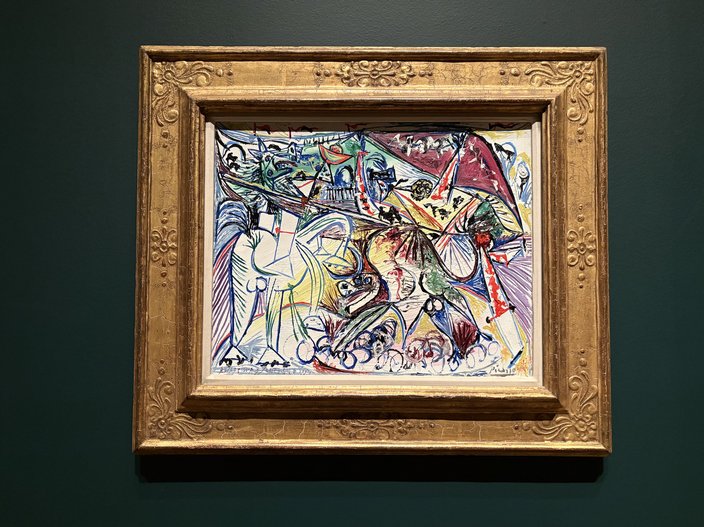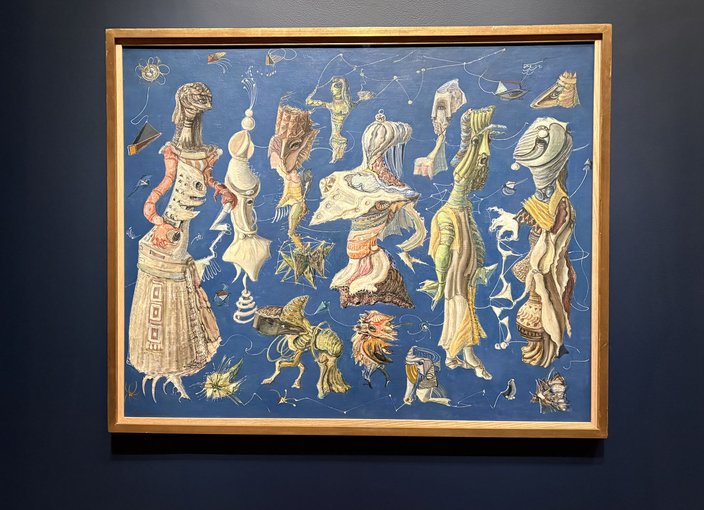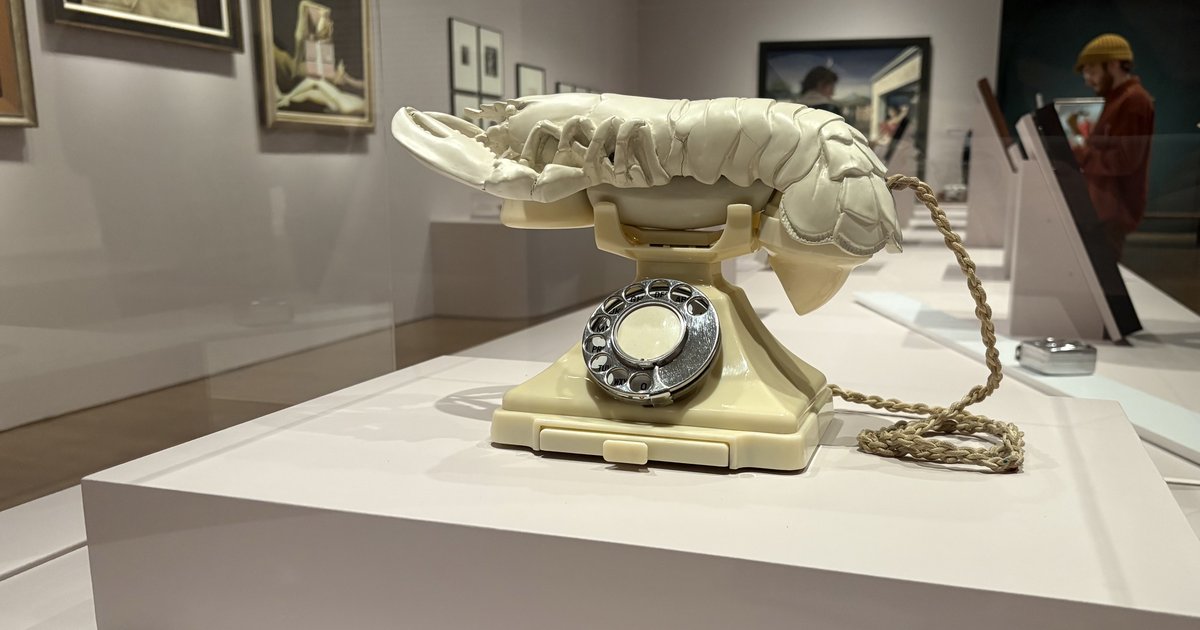At the Philadelphia Art Museum’s latest exhibit, objects and figures are just slightly off. The bodies in paintings are fractured, missing parts or sprouting beaks. Spikes burst out of a clothing iron. A lobster rests in the cradle of a rotary phone.
These alternatively playful and haunting pieces are part of “Dreamworld: Surrealism at 100,” a traveling collection that opens at PhAM on Saturday. It’s a big get for the recently, controversially rebranded institute, which will serve as the final and only American stop on the exhibit’s tour. The collection was previously displayed in Brussels, Paris, Hamburg and Madrid.
MORE: Low Cut Connie’s music video for new protest song features ICE raids, National Guard
“Dreamworld” celebrates a century of surrealist art from the likes of Salvador Dalí, Pablo Picasso, Frida Kahlo, Max Ernst, René Magritte, Leonora Carrington and Man Ray. The movement, officially born through André Breton’s 1924 text “Manifesto of Surrealism,” pushed the boundaries of reality with imaginative, dreamlike images drawn from the unconscious mind. Some of its most famous works include Dalí’s melting clocks in “The Persistence of Memory” and Magritte’s “The Son of Man” — a simple portrait of a man in a bowler hat, with a green apple obscuring his face.

‘Dreamworld’ includes works by Pablo Picasso, like this 1934 oil painting ‘Bullfight.’
Neither of those pieces made it into the exhibit, but visitors will see Dalí’s “Aphrodisiac Telephone,” an all-white landline with a sculpted lobster in place of the handset. It anchors a section on eroticism. Other galleries focus on the emergence of surrealism, its connections to nature and expressions of the supernatural.

Surrealist artists were inspired by the natural world. Above, Belgian painter Suzanne Van Damme incorporated shells and clams into the creatures in ‘Surrealist Composition.’
The specter of war dominates two other sections. Surrealists, who often played with creatures from Greek mythology like the Minotaur and Chimera in their work, used monsters to symbolize the rise of authoritarianism in Francisco Franco’s Spain and Adolf Hitler’s Germany. The outbreak of World War II spurred some of these artists to flee Europe; their work as exiles living in Mexico and the U.S. is highlighted in a curation exclusive to the Philadelphia Art Museum.

German-born artist Max Ernst painted ‘The Barbarians’ in 1937 as dictators rose to power in Europe.
The exhibit displays works across media, from oil paintings to shadow boxes to an umbrella made from sponges. Three video installations project silent black-and-white images on the walls. A mobile from Philadelphia-born artist Alexander “Sandy” Calder, the subject of the newly opened Calder Gardens, also sways faintly in a gallery hall.
“Dreamworld” will be on view on the art museum’s second floor through Feb. 16, 2026. Curator Matthew Affron will lead a lecture on the exhibit during its opening day at 2 p.m., with educator- and tarot-themed tours to follow at later dates.
Follow Kristin & PhillyVoice on Twitter: @kristin_hunt
| @thePhillyVoice
Like us on Facebook: PhillyVoice
Have a news tip? Let us know.
